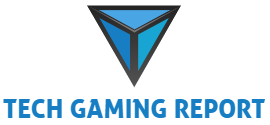While HUAWEI continues to announce the arrival of more and more Smart Office devices, the total number of users upgraded to Harmony OS 2 is officially 100 million.
At a new event on September 13 to launch its new Smart Office devices, HUAWEI announced many new products, including the HUAWEI MateBook 13s, MateBook 14s, HUAWEI MateStation X desktop, HUAW MateView GT 27 display, and HUAWEI PixLab X1 printer. At the same time, it was announced that the number of users who have upgraded their devices to Harmony OS 2 has exceeded 100 million.
“This is a milestone in HUAWEI history and we are grateful to our consumers and partners for their support,” said Richard Yu, CEO and CEO of Consumer Business Group. “HarmonyOS offers users easier ways to connect, a superior user experience and improved services from many devices that serve different scenarios.” At the same time, HarmonyOS is becoming the operating system that will form the foundation of the new era. Internet of Everything, as HUAWEI and its partners seek to create a smart, open, trustworthy and open source ecosystem, with the goal of common success. . “he added.
HarmonyOS 2 installation took place at a record pace after the update that became available on June 2 on more than 100 device models, including smartphones and tablets. In just one week it reached 10 million users and on July 8 this figure reached 30 million. On September 12, 3 months later, the number of updated users reached 100 million. No other mobile operating system has reached 100 million users in such a short time.
As a state-of-the-art operating system for smart devices, HarmonyOS enables different types of devices to connect and communicate with each other through a common language. In the next generation control panel, the user can drag the icon from one device to another to connect them, allowing him to use multiple devices as one.
Users can customize their home screen with widgets of different sizes, based on their personal style. Widgets also allow them to easily access personalized services, such as news and calendar, without even having to open an application. HarmonyOS 2 has superior performance and improved features that allow, among other things, users to play games for longer periods of time and always return to where they were when many applications were opened at the same time. These new features allow users to get even closer to the simple, fluid, continuous, secure and reliable experience of a life of AI without interruptions and to get the most out of what a real upgrade means.
A new product category was also unveiled at the same event, the HUAWEI PixLab X1 Printer, which runs on HarmonyOS. This product plays a critical role in Huawei’s Smart Office product line as part of its Seamless AI Life vision and features state-of-the-art technology. Users can connect the printer via Bluetooth to any nearby HUAWEI product (smartphone, tablet, computer) through a pop-up window that appears on the screen. This process takes only 20 seconds. The PixLab X1 printer also supports Tap to Print, providing smart and accessible technology for everyone.
HarmonyOS 2 was enthusiastically received by users. To meet user demands, Huawei has invested heavily in R&D to make HarmonyOS 2 compatible with nearly 100 different device models, even a quarter ahead of schedule. Gradually more and more older models will enjoy the innovative features and improved user experience of HarmonyOS 2.
HarmonyOS has not only sparked consumer enthusiasm, it has also attracted a large number of developers and partners to the HarmonyOS ecosystem. The number of HarmonyOS developers has exceeded 1.3 million, ten times more than last year.
More than 1,000 hardware vendors, such as Midea and Joyoung, have adopted HarmonyOS Connect to help create a more comfortable user experience that includes simplified connectivity and interaction, service widgets, and hardware sharing. Leading platforms such as JD.com, Youku, and Sina News have developed easy-to-access HarmonyOS applications and services, which significantly contribute to user satisfaction and experience.
Going forward, Huawei will continue to contribute to the OpenHarmony open source project to help it grow and improve, with developers from various industries creating next-generation operating systems based on OpenHarmony, further enabling digitization and smart growth.

Introvert. Beer guru. Communicator. Travel fanatic. Web advocate. Certified alcohol geek. Tv buff. Subtly charming internet aficionado.
